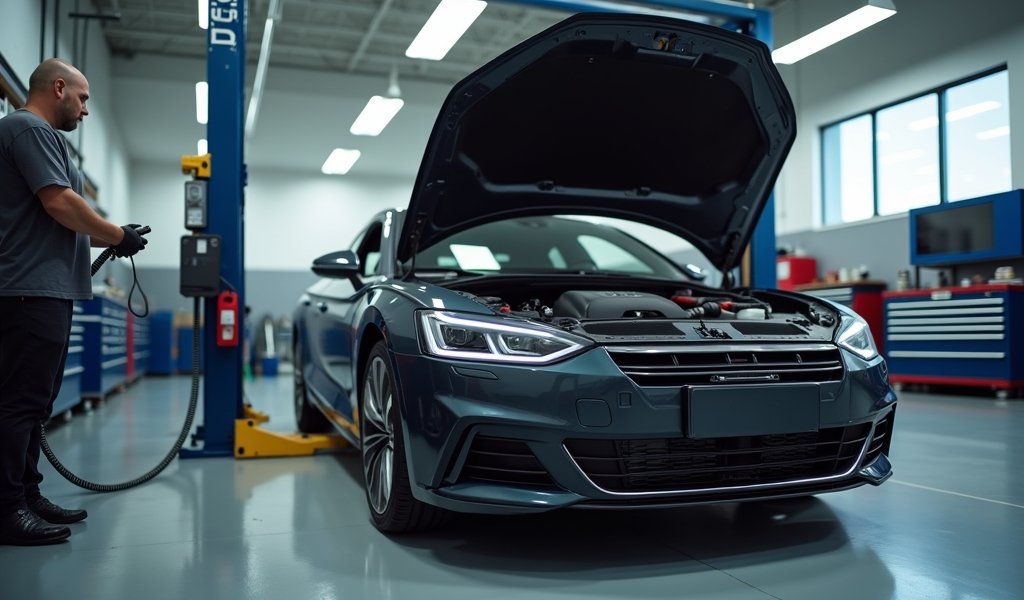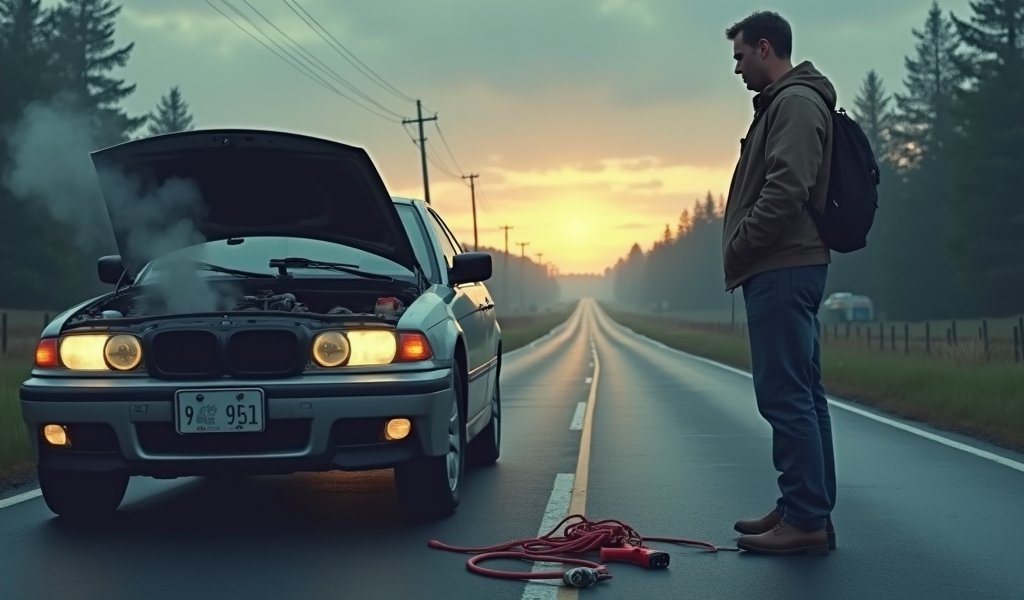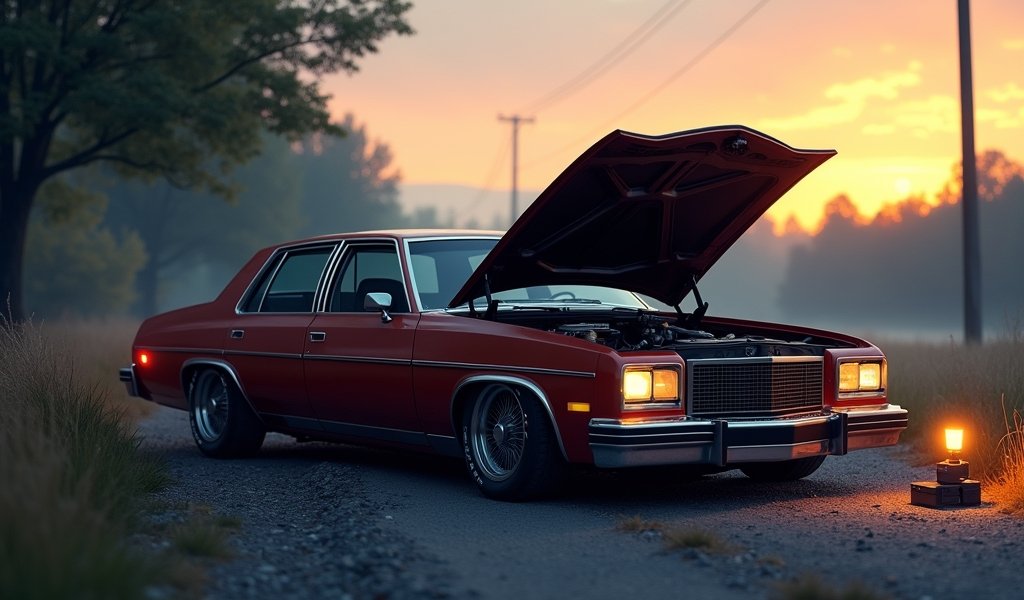Overview
This article outlines the seven most common reasons cars won’t start (dead battery, starter motor issues, alternator failures, fuel system problems, ignition switch complications, spark plug issues, and security system glitches) along with specific diagnostic steps and solutions for each problem. It provides practical troubleshooting methods, emergency solutions for stranded drivers, and preventative maintenance tips to help car owners quickly identify and resolve starting issues before they require expensive repairs.
Table of Contents
- Introduction
- Common Reasons Why Cars Won’t Start
- Fix #1: Dead Battery Issues
- Fix #2: Starter Motor Problems
- Fix #3: Alternator Failures
- Fix #4: Fuel System Troubles
- Fix #5: Ignition Switch Complications
- Fix #6: Spark Plug and Ignition Problems
- Fix #7: Security System Glitches
- Emergency Solutions When You’re Stranded
- Preventative Maintenance Tips
- Conclusion
- Frequently Asked Questions
Introduction
We’ve all been there. You’re already running late, you hop into your car, turn the key, and… nothing happens. That sinking feeling in your stomach is universal—few car problems are as immediately frustrating as a vehicle that refuses to start.
According to AAA’s roadside statistics, battery issues alone account for nearly 25% of service calls annually. The good news? Many starting problems have straightforward fixes that don’t require a mechanic’s touch.
After 15+ years working as an automotive technician, I’ve seen thousands of no-start situations, and I can tell you that understanding a few basics can save you hundreds in unnecessary towing and repair costs. Let’s walk through the seven most common reasons why your car won’t start and the practical solutions to get you rolling again.
Common Reasons Why Cars Won’t Start
Before we dive into specific fixes, it helps to understand what we’re up against. Based on my experience and industry data, here’s how no-start conditions typically break down:
- Battery issues: 40%
- Starter motor problems: 15%
- Fuel system troubles: 12%
- Alternator failures: 10%
- Ignition switch complications: 8%
- Spark plug/ignition problems: 7%
- Security system glitches: 5%
- Miscellaneous issues: 3%
Diagnosing the right problem is crucial—throwing parts at the wrong issue wastes both time and money. Let’s explore each of these common culprits and how to address them.

Fix #1: Dead Battery Issues
A dead or weak battery tops the list of starting problems for good reason—they simply wear out over time, and extreme temperatures accelerate their decline.
How to Identify Battery Problems
Your car is practically screaming “battery problem!” when you notice:
- Clicking sound when turning the key
- Dashboard lights that illuminate dimly
- Slow, sluggish cranking
- Accessories (radio, lights) that don’t function
- Multiple jump starts needed recently
Jump-Starting Procedure
If you suspect a dead battery, here’s how to jump-start it safely:
- Position the working vehicle nose-to-nose with yours, but ensure the cars aren’t touching
- Turn off both vehicles completely
- Connect the red (positive) cable to the positive terminal on your dead battery
- Connect the other end of the red cable to the positive terminal on the working battery
- Connect the black (negative) cable to the negative terminal on the working battery
- Connect the other end of the black cable to an unpainted metal surface on your car’s engine block (not the dead battery)
- Start the working vehicle and let it run for 2-3 minutes
- Attempt to start your vehicle
- If successful, leave your engine running for at least 20 minutes to recharge
When to Replace Versus Recharge
Most car batteries last 3-5 years. Consider these factors when deciding between a recharge or replacement:
- Battery less than 3 years old with no prior issues? A simple recharge might do the trick.
- Battery repeatedly dying? It’s probably time for a new one.
- See bulging, leaking, or corroded terminals? Replace it immediately.
You can perform basic battery maintenance yourself by cleaning terminals with a wire brush and baking soda solution and ensuring connections are tight.
Fix #2: Starter Motor Problems
The starter motor is the muscle that cranks your engine when you turn the key. When it’s failing, your engine won’t turn over properly—or at all.
Signs of a Failing Starter
Listen and look for these telltale symptoms:
- Grinding noises when starting
- Single loud click but no engine turnover
- Intermittent starting success
- Smoke from under the hood during start attempts
- Engine cranking very slowly despite a good battery
Testing Your Starter
Here’s a simple test you can perform:
- Turn on your headlights
- Try to start your car
- If the lights dim significantly but the engine doesn’t crank, your starter might be the problem
Temporary Fixes to Get You Moving
If you’re stranded with a starter issue, these tricks might get you home:
- Tap the starter motor firmly (but gently) with a solid object like a wrench handle while someone tries to start the car
- Check and tighten all electrical connections to the starter
- Try push-starting if you have a manual transmission
Most starter replacements cost $350-$600 at repair shops. While DIY replacement is possible with proper tools and mechanical know-how, the awkward positioning in many vehicles makes it challenging for novice mechanics.
Fix #3: Alternator Failures
The alternator keeps your electrical system running and your battery charged while the engine is running. When it fails, you’ll eventually find yourself with a no-start situation.
How Alternator Issues Affect Starting
A bad alternator won’t typically prevent a car from starting immediately—it’s more of a chain reaction. First, it stops charging your battery properly. Then your battery slowly drains until it doesn’t have enough juice to start the car.
Warning Signs of Alternator Problems
- Battery or charging system warning light illuminated
- Headlights that dim or brighten with engine RPM
- Electrical accessories working intermittently
- Strange whining noises from the front of the engine
- Battery dies shortly after jump-starting
Testing Your Alternator
Try this quick test:
- Start your car (jump-start if necessary)
- With the engine running, disconnect the positive battery terminal
- If the engine dies immediately, your alternator isn’t generating power
For more accurate results, most auto parts stores offer free alternator testing. Or use a multimeter to check if it’s producing 13.5-14.5 volts at idle.
Repair Options
Alternator replacement typically costs $500-$1,000 at repair shops. Refurbished alternators are a cost-effective option that still provides reliability. If you’re comfortable with moderate mechanical work, replacing an alternator yourself can save significant money.

Fix #4: Fuel System Troubles
No fuel, no start—it’s that simple. But fuel system issues can range from the embarrassingly obvious (empty tank) to the more complex (failed fuel pump).
Empty Tank or Fuel Pump Issues
Sometimes the simplest explanation is correct—you might be out of gas. If your gauge is wonky or you’ve been pushing it, this could be your issue. Beyond that, fuel pump failures show these symptoms:
- Engine cranks normally but won’t start
- Loss of power while driving before the no-start condition
- Whining noise from the rear of the vehicle (where the tank is located)
- Car starts but stalls immediately
Clogged Fuel Filters
Fuel filters prevent contaminants from reaching your engine. When clogged:
- The engine may start but run roughly
- You might experience hesitation during acceleration
- The vehicle could stall unpredictably
- Eventually, no-start conditions develop
According to Car Care Council research, replacing your fuel filter every 30,000 miles can prevent up to 70% of fuel system-related no-starts.
DIY Troubleshooting Steps
- Listen for the fuel pump when you turn the key to “on” (not start)—you should hear a brief humming
- Check for blown fuel pump fuses in your fuse box
- Try tapping on the bottom of the fuel tank with a rubber mallet while someone tries to start the car
- Add fuel system cleaner during your next fill-up to prevent future issues
Fix #5: Ignition Switch Complications
The ignition switch is what connects your key to the car’s electrical system. When it fails, turning the key might do absolutely nothing.
Symptoms of Ignition Switch Failure
- Car starts intermittently
- Dashboard lights flicker or cut out
- Vehicle suddenly stalls while driving
- Key turns but nothing happens—no lights, no sounds
- Accessories work but engine won’t crank
Quick Tests to Identify the Problem
- Turn the key to the “on” position (not starting)
- Check if dashboard warning lights illuminate
- If no lights appear, the ignition switch might be failing
- Try jiggling the key while in the ignition to see if lights respond
Temporary Workarounds
When you’re stuck and suspect an ignition switch issue:
- Try wiggling the key while turning
- Apply pressure to the key in different directions while turning
- Check if the steering wheel is locked—sometimes releasing this pressure helps
Ignition switch replacement costs vary widely based on vehicle make and model, typically ranging from $150-$400. For vehicles with steering column-mounted switches, professional installation is recommended due to the complexity.
Fix #6: Spark Plug and Ignition Problems
No spark means no combustion, which means your engine won’t run. Spark plugs create the electrical spark that ignites the fuel in your engine.
How Bad Spark Plugs Prevent Starting
When spark plugs fail:
- The engine might crank but not start
- You could experience misfires or rough running before a no-start situation
- Starting becomes progressively more difficult
- You might smell raw fuel after attempting to start
Checking Your Spark Plugs
- Locate and remove one spark plug (consult your owner’s manual for location)
- Inspect for:
- Heavy carbon deposits (black, sooty appearance)
- Oil contamination
- Cracked porcelain
- Excessive gap between electrodes
- Corroded electrodes
Healthy spark plugs should be grayish-tan with minimal deposits.
Other Ignition Components to Inspect
Beyond spark plugs, check:
- Ignition coils
- Spark plug wires (on older vehicles)
- Distributor cap and rotor (on older vehicles)
- Crankshaft position sensor
Most modern vehicles use long-life spark plugs that should be replaced every 60,000-100,000 miles. However, high-performance engines or older vehicles may require more frequent replacement. Always consult your vehicle’s maintenance schedule.
Fix #7: Security System Glitches
Modern anti-theft systems are great until they mistake you for a thief. Security system glitches can completely disable your vehicle even when you have the correct key.
When Your Car’s Security Prevents Starting
Common scenarios include:
- The security light stays illuminated on your dashboard
- Engine cranks but won’t start
- Key fob isn’t recognized by the vehicle
- The steering wheel is locked
Resetting Your Security System
While procedures vary by vehicle make and model, these general approaches often work:
- Lock and unlock the driver’s door with the key (not the remote)
- Insert the key in the ignition, turn to “on” for 10 minutes (don’t start), then try starting
- Disconnect the negative battery terminal for 2-3 minutes, then reconnect
- Hold the panic button on your key fob for 5 seconds, then try starting
Key Fob Troubleshooting
- Replace the battery in your key fob
- Ensure there are no objects interfering with the signal (cell phones, metal objects)
- Try your spare key if available
- Hold the key fob directly against the start button (many vehicles have a backup recognition system)
If DIY resets don’t work, you may need dealer assistance. Dealerships have specialized diagnostic equipment for security systems, and some vehicles require computer reprogramming when security systems malfunction.
Emergency Solutions When You’re Stranded
When you’re stuck with a no-start situation away from home:
- Safety first – Move away from traffic if possible and turn on hazard lights
- Basic diagnosis – Use the symptoms to identify which of the 7 issues might be affecting your vehicle
- Try quick fixes based on your diagnosis
- Contact roadside assistance if you have coverage through insurance, vehicle manufacturer, or third-party membership like AAA
- Call a mobile mechanic – Many services now come to your location
- Arrange alternative transportation while your vehicle is being fixed
Remember that staying safe is more important than getting your car started. If you’re in a dangerous location or extreme weather conditions, prioritize finding shelter or assistance.
Preventative Maintenance Tips
The best way to handle no-start situations is to prevent them entirely. A consistent car inspection routine can catch potential issues before they leave you stranded.
Regular Checks
- Test your battery every 6 months (most auto parts stores offer free testing)
- Inspect battery terminals for corrosion
- Listen for unusual sounds when starting
- Pay attention to warning lights on your dashboard
- Address small issues before they become major problems
Seasonal Considerations
- Summer: Heat accelerates battery fluid evaporation; check levels
- Winter: Cold weather reduces battery capacity; consider a battery blanket in extreme climates
- Spring/Fall: These transitional seasons are ideal for comprehensive vehicle inspections
DIY Maintenance Schedule
Create a simple maintenance calendar:
- Monthly: Check fluid levels, inspect belts and hoses, test all lights
- Quarterly: Test battery, check tire pressure, inspect air filters
- Bi-annually: Change oil (unless manufacturer specifies different intervals), rotate tires
- Annually: Complete vehicle inspection, replace filters as needed
Conclusion
That moment when your car won’t start is never fun, but now you have the knowledge to troubleshoot the most common culprits. From the simple dead battery to more complex ignition or security system issues, understanding what might be wrong is half the battle.
Remember that many starting problems can be prevented with regular maintenance. Don’t ignore those occasional rough starts or warning lights—they’re often early indicators of bigger problems to come.
While this guide covers the most common issues, every vehicle has its quirks. If you’re experiencing persistent starting problems that don’t match any of these scenarios, it might be time to consult with a professional mechanic for a thorough diagnostic.
Have you overcome a particularly tricky no-start situation? Share your experience in the comments below—your solution might help someone else facing the same problem!
Frequently Asked Questions
How can I tell if it’s my battery or alternator causing the no-start?
If jump-starting works but the car dies again soon after, it’s likely your alternator. If jump-starting consistently gets the car running for a good amount of time, it’s probably just a battery issue.
What should I do if my car won’t start but I hear clicking?
The clicking sound usually indicates a weak battery that doesn’t have enough power to engage the starter. Try jump-starting your vehicle or charging the battery.
Can a clogged fuel filter prevent my car from starting?
Yes, a severely clogged fuel filter can restrict fuel flow enough to prevent starting. If your car cranks normally but won’t start, and it’s been more than 30,000 miles since your last filter change, this could be the culprit.
Why does my car sometimes start and sometimes not?
Intermittent starting problems often point to loose electrical connections, a failing ignition switch, or a worn starter motor. Temperature changes can make these issues more noticeable at certain times.
Is it dangerous to keep driving with a car that’s hard to start?
Yes, it can be. Starting difficulties often indicate underlying problems that could lead to being stranded or even dangerous breakdowns while driving. Address starting issues promptly.

